Key takeaways:
- Low light photography enhances creativity but presents challenges such as motion blur and noise, requiring a good understanding of camera settings.
- Good lighting is crucial in photography, impacting the mood and storytelling aspect of images.
- Common issues in low light include achieving sharp focus despite limited visibility and managing noise from high ISO settings.
- Adjusting ISO, shutter speed, and aperture is essential for capturing compelling images in low light conditions, allowing for greater control and creativity.
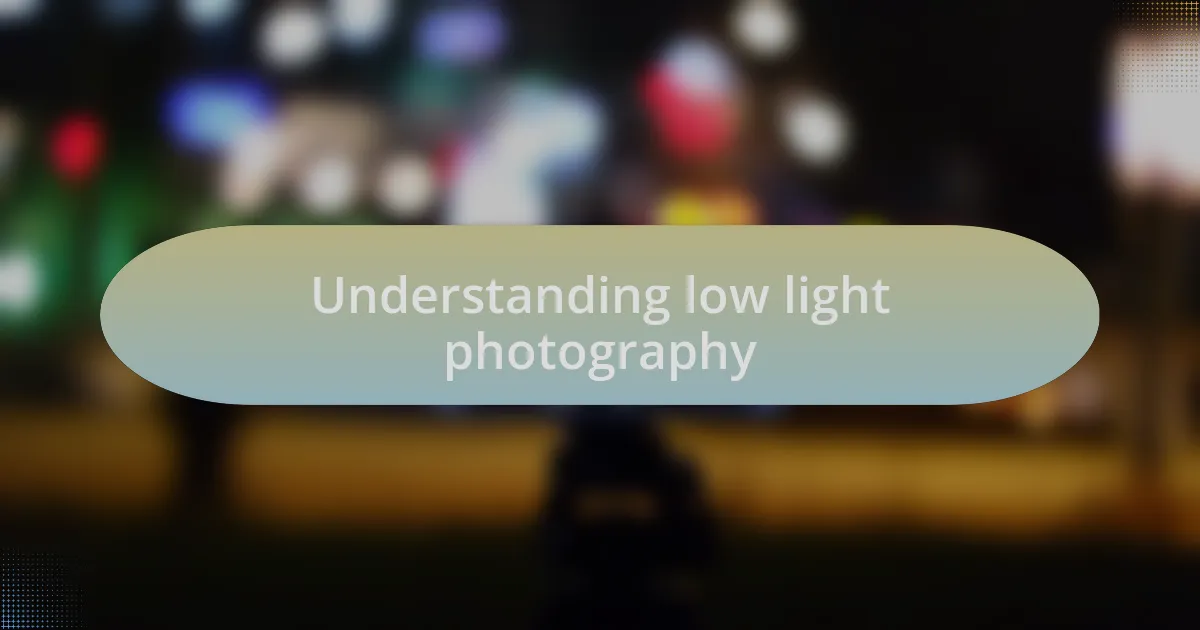
Understanding low light photography
Low light photography can feel like a magical challenge, where shadows shape the scene in unexpected ways. I remember my first attempt at shooting during dusk; the colors seemed to dance under the dead light. I was fascinated by how much emotion a single dimly lit moment could convey, making me wonder—could the darkness actually enhance my creativity?
When I first dived into this realm, I struggled with motion blur and noise in my images. It was frustrating, seeing my vision getting muddied by poor lighting conditions. But then I discovered that a slower shutter speed could breathe life into stillness, creating a dreamy effect that I never expected. Have you ever experienced a moment where a mistake turned into a unique artistic choice?
Understanding your camera settings is crucial in low light. It often felt like solving a puzzle for me, adjusting ISO, aperture, and shutter speed. Each setting plays a critical role—higher ISO can introduce noise, while a wide aperture draws in more light but limits depth of field. It’s this balancing act that makes the whole process an exhilarating adventure; don’t you love the thrill of mastering a difficult shot?
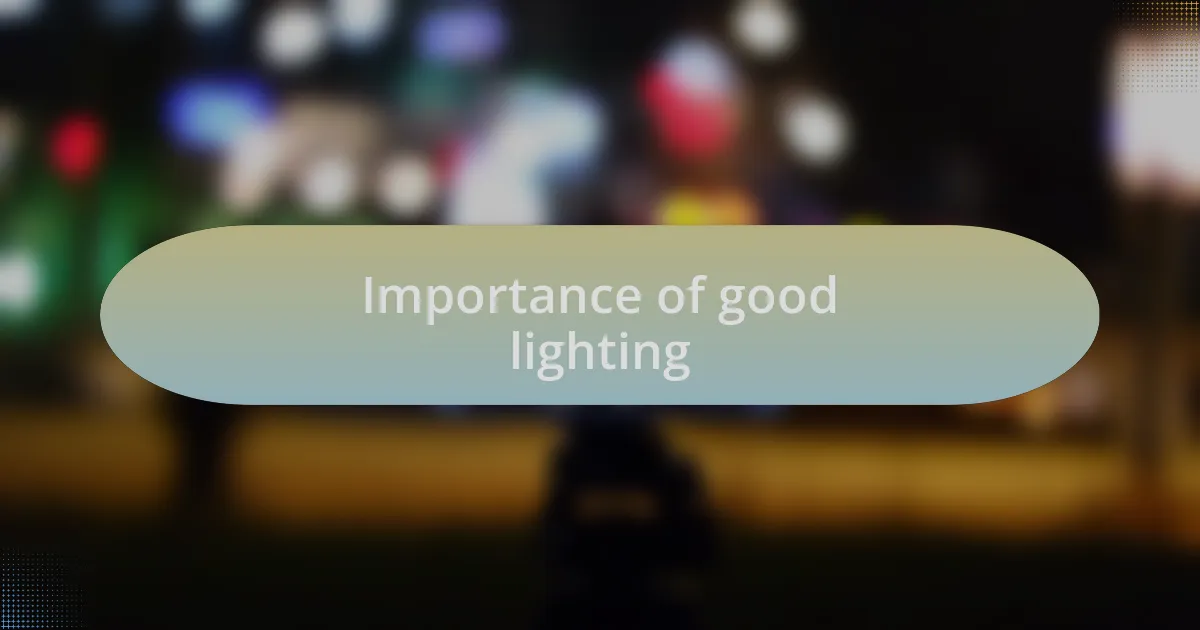
Importance of good lighting
Good lighting is truly the backbone of compelling photography. I often think back to an evening spent shooting candlelit portraits; the gentle flicker of the flames created a warmth that no artificial light could replicate. When I frame a shot under such conditions, I’m reminded that light is not just a technical element but a storyteller, weaving emotion into each image.
In my experience, the quality of light can turn an ordinary scene into something extraordinary. Once, during a foggy morning, I found myself captivated by the way light diffused through the mist, creating a soft, ethereal glow. It’s moments like these that make me appreciate the intricate dance between light and shadow, leading to images that resonate deeply. Have you ever stumbled upon a scene where the lighting transformed your entire perspective?
The importance of good lighting also extends beyond mere aesthetics; it fundamentally impacts the mood of your photographs. When I experiment with various light sources, I feel like I’m conducting an orchestra, where every adjustment strikes a different emotional chord. The right lighting elevates a photograph from mere documentation to an evocative narrative, wouldn’t you agree?
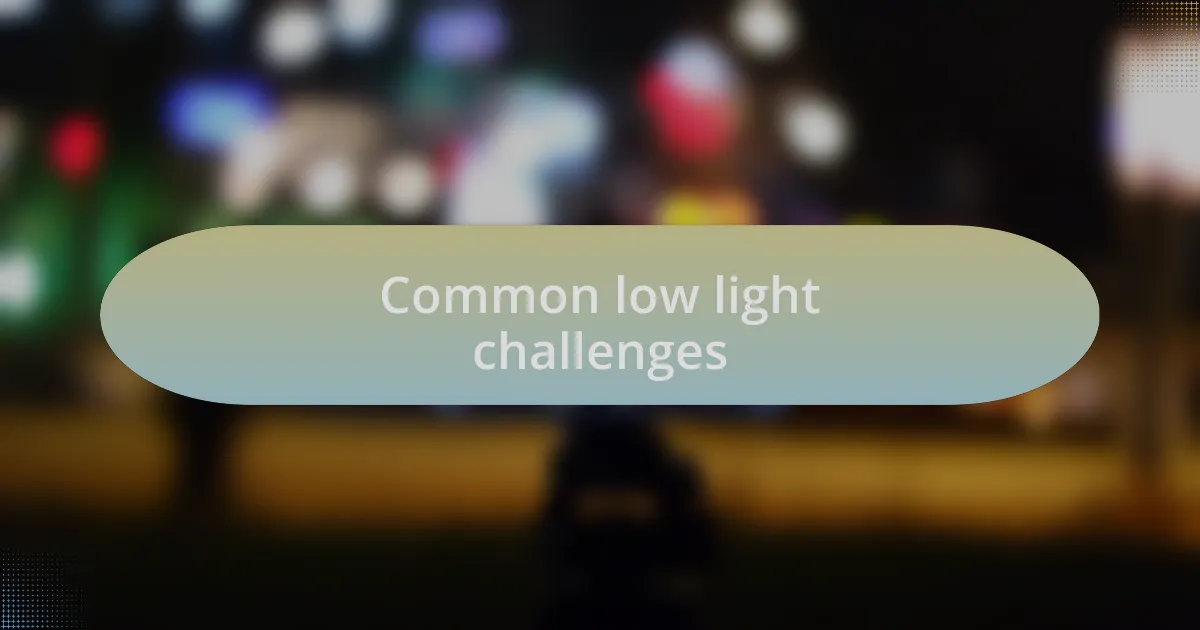
Common low light challenges
Low light situations present unique challenges that can test any photographer’s skills. For instance, I remember a night shoot at a local fair where the vibrant colors of the carnival lights contrasted sharply with the surrounding darkness. Despite the excitement, I struggled with low shutter speeds that yielded motion blur instead of crisp images. It’s moments like these that make me wonder: how can we find the balance between capturing the magic of low light and maintaining clarity?
Another common issue is noise—the graininess that can affect the quality of your images when shooting in dim conditions. I vividly recall a time when I tried to capture a starry sky. The beauty of the stars was overshadowed by the hum of digital noise in my photographs, turning what could’ve been stunning images into disappointing results. Have you faced similar frustrations? It makes me appreciate the importance of understanding your camera settings and the impact they have on the final image.
Finally, composition in low light can be a real puzzle. I’ve often found myself contorting into awkward positions, squinting at my screen to frame the shot just right while grappling with limited visibility. One memorable evening, I was photographing a street musician, and the low light made it difficult to emphasize the details of his expressions and instruments. It was a real lesson in creative problem-solving—how can we use shadows to enhance our compositions instead of letting them overshadow our subjects?
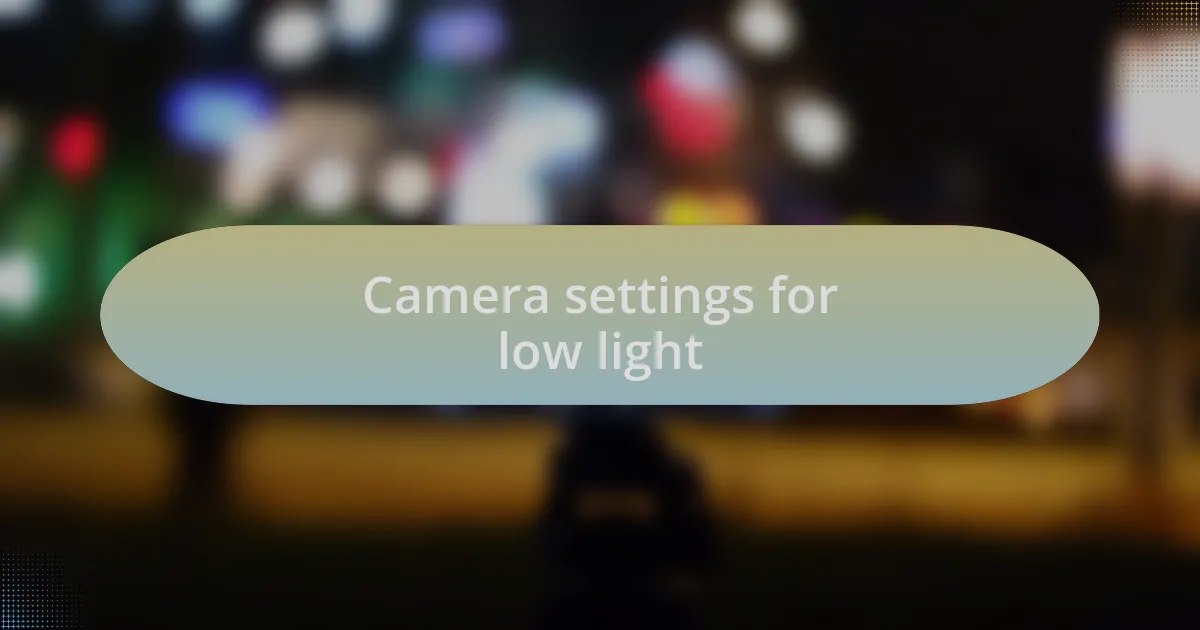
Camera settings for low light
When it comes to camera settings for low light, I find that adjusting the ISO can make a tremendous difference. I remember a late-night urban shoot during a rainstorm, where I tested my camera’s limits by cranking up the ISO to capture reflections in puddles. While increasing the ISO can introduce noise, it’s also a game-changer for preserving details in dimly lit scenes. Have you ever pushed your camera’s ISO to the max? It can be a fine balance between noise and clarity.
A key aspect that often gets overlooked is shutter speed. In my experience, I’ve had to learn the hard way that too slow a shutter speed in low light can lead to blurry images. During a concert shoot, I had my shutter speed set too low, resulting in soft focus on my subject as they danced under the stage lights. I quickly adjusted to a faster speed, which, although it meant I needed to enhance my ISO and aperture, allowed me to capture sharper images that preserved the vibrant energy of the show.
Don’t underestimate aperture, either. Lowering your f-stop allows more light to hit the sensor, which is incredibly useful in low-light conditions. I recall a breathtaking moment at dusk when I photographed silhouettes against an orange sky. By opening up my aperture, I not only let in more light but also created a beautiful depth of field that made my subject stand out. How often do we forget to manipulate this setting for dramatic and clear low-light images? It’s these little adjustments that can elevate your work significantly.
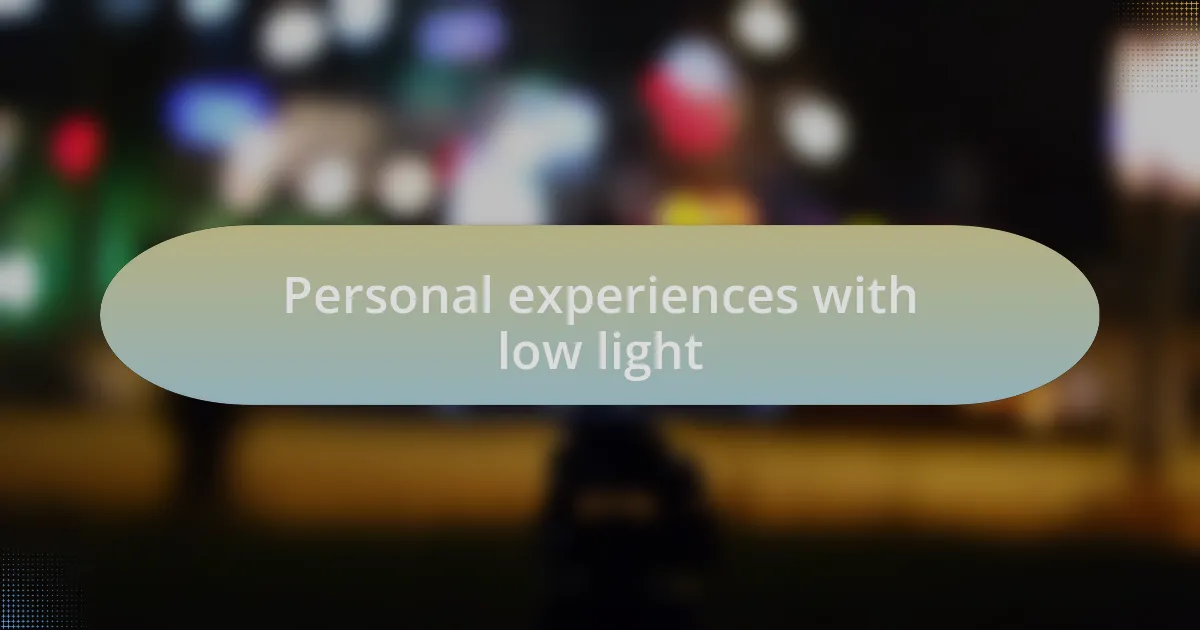
Personal experiences with low light
The first time I ventured into low-light photography, I felt a mix of excitement and apprehension. I was at a family gathering, and as the sun set, the room transformed into a cozy, yet dim space. I decided to grab my camera and snap some candid shots of loved ones sharing stories. To my surprise, the moments captured were infused with warmth, but I also noticed some graininess creeping in due to my high ISO settings. It was a lesson learned—sometimes, embracing a little imperfection can add character to your images.
On another occasion, I found myself at an art installation in a darkened warehouse. The ambient lighting was intentionally low to enhance the artworks, but it posed a challenge for my photography. I remember adjusting my lens on the fly, switching to a wider aperture to draw in all the available light. As I captured the textures of the pieces, I felt a rush of exhilaration. It reminded me that overcoming low light can transform the ordinary into the extraordinary. Have you ever felt that thrill when you finally nail a low-light shot?
As I look back on my experiences, I realize how vital it is to embrace the challenge of low light. During an evening stroll, I decided to take photos of street lamps reflecting off wet pavement. With my camera set to a slower shutter speed, I held my breath, hoping to freeze the right moment. The result was a stunning blend of light and texture that felt almost poetic. Have you ever found beauty in the unpredictability of low light? It’s moments like these that remind me why I fell in love with photography.